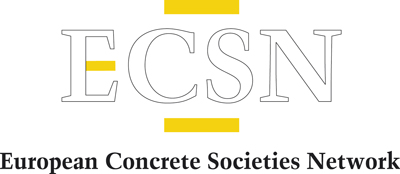ECSN Webinar held in Nov, 25th
Join ECSN on the journey to more sustainable construction!
ECSN is the federation/network of European concrete societies comprising of 13 members. In this webinar, we have brought together experts from within ECSN circles to present examples of how the concrete construction sector can reduce its impact on the climate.
The earth faces great challenges. The UN Sustainable Development Goals set out a blueprint for achieving a more sustainable future for all of society, with Goal 13 requiring urgent action to combat climate change and its impacts. The 2015 Paris Agreement further stipulates that the global temperature increase will be limited to below 2°C, with the aim of limiting it to 1.5°C. This is to be achieved primarily through the reduction of greenhouse gas emissions.
An increasing global population requires societal development with necessary associated housing and infrastructure. Yet, climate change action also requires that all of society works to reduce their impact on the climate. In many areas, concrete is the only building material that can meet long term quality and durability requirements. Therefore, concrete continues to be an essential material for building sustainably, and for creating the welfare demanded by today’s modern society.
The purpose of this webinar is to demonstrate the potential of the concrete sector to do more to reduce its impact. For example, continuing research across the globe has resulted in real progress being made in developing binders with a lower impact on the climate. Work is also being progressed which aims to build more optimised and slender construction elements. Additionally, a review of overly stringent regulations may also be required to allow for reductions in cement contents in certain construction sectors.
In parallel with all of this, the development of Carbon Capture, Utilisation and Storage (CCUS) is taking place. With Norway having more than 20 years’ experience of the geological storage of carbon dioxide, it is known that CCUS is technically possible. However, many challenges remain in its full development at scale. Other examples of the use of CCUS technology include new developments in the manufacture of concrete building blocks.
Our future requires that many solutions are needed; therefore, the whole of society must cooperate in meeting these challenges.
Program
Moderators: Børge Johannes Wigum – Chairman of Icelandic Concrete Association & Cecilie Hagby – Managing Director of Norwegian Concrete Association.
| 12:30 | Introduction: European Concrete Societies Network & Sustainability challenges for the concrete industry in Europe Richard McCarthy, Chairman ECSN & Managing Director of the Swedish Concrete Association (Sweden) |
| 12:45 | A general overview on decarbonisation and resource efficiency in concrete construction Lars Meyer, Managing Director of the German Society for Concrete and Construction Technology (Germany) |
| 13:05 | The path to circular economy in the cement and concrete industry Brian Gilmore, Sustainability Manager, Cement Manufacturers Ireland (Ireland) |
| 13:25 | Circular solutions within the concrete industry to reach climate ambitions Sigríður Ósk Bjarnadóttir, University of Iceland (Iceland) |
| 13:45 | Roadmap for climate neutral concrete in Sweden Malin Löfsjögård, Managing Director of the Swedish Concrete Federation (Sweden) |
| 14:05 | Break |
| 14:15 | Novel approaches used and future ideas of sustainability in Austria Konrad Bergmeister, University of Natural Resources and Life Sciences, Vienna (Austria) |
| 14:35 | NeoCem project – Fitness for use of new Belgian composite cements Filip Van Rickstal, Managing Directorof the Belgian Cement Research Centre (Belgium) |
| 14:55 | Development of low carbon classification for concretes Jouni Punkki, Concrete Technology, Aalto University (Finland) |
| 15:15 | How a classification system has lowered the carbon footprint for concrete in Norway Sverre Smeplass, Chief Advisor Skanska (Norway) |
| 15:35 | Break |
| 15:45 | Sustainable concrete structures – implementation of principles in a new fib Model Code 2020 Petr Hájek, Department of Architectural Engineering, Czech Technical University in Prague (Czech Republic) |
| 16:05 | The UK concrete and cement industry road map to beyond net zero – an overview and update on progress of related initiatives Elaine Toogood, Head of Architecture, MPA, The Concrete Centre (UK) |
| 16:25 | Summary and general discussions |
| 16:40 | End of webinar |
